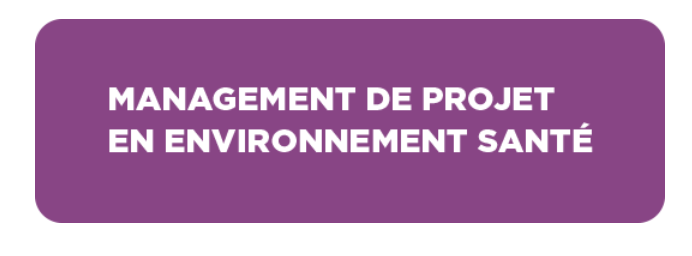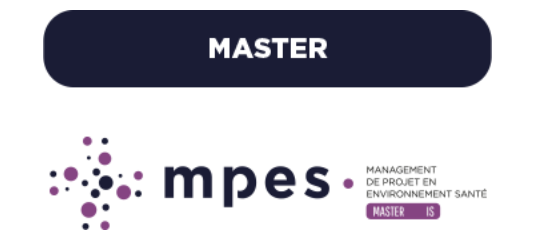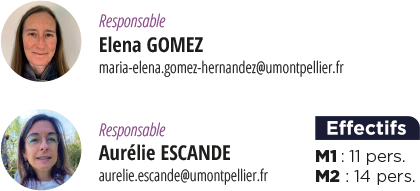MPES environmental health project management


CROSS-DISCIPLINARY TRAINING FOR IN-DEPTH KNOWLEDGE OF CHEMICAL RISKS IN THE WORKPLACE, FROM RISK ASSESSMENT TO RISK MANAGEMENT.
OBJECTIVES
The aim is to train specialist health and environment managersin the fields of quality, hygiene, chemical risks and social responsibility, hygiene, chemical risks and corporate social responsibility AND to promote the employability of graduates through a combination of academic and and interactive teaching.
SPECIFIC KNOWLEDGE
PROVIDED BY THE COURSE
- Analysis, characterization and assessment of risk situations
- Project management, risk management
- Regulations on chemical substances (REACh)
- ICPE, industrial environment
- Integrated management system (IMS): ISO 9001 (quality)
ISO 45001 (safety) and ISO 14001 (environment), CSR (Corporate Social Responsibility) - Environmental Risk Assessment, Human Risk Assessment
(Risk assessment and management of chemical substances) - Plant Protection Products, Biocides, Cosmetics, Pharmaceuticals
- Health and safety
SPECIFIC SKILLS PROVIDEDBY THE COURSE
Skills for entry into responsible professions
Chemical hazards
- Master all stages of product impact assessment: health risks (consumer, worker, operator), environmental risks
Industrial environment :
- Plan the development, deployment and performance assessment stages
of a QSE management system in compliance with
industrial environment regulations (ICPE, etc.) and the
labor code. - Monitoring and managing quality and integrated QSE systems
- Identify, prevent and manage the environmental impacts of industrial activities
TEACHING RESOURCES AND PROFESSIONAL EXPERIENCE
- Learning Lab, inverted lectures, interactive seminars, company visits, project-based learning
- Numerous professional guest speakers
- M1 + M2 open to apprenticeships, schedules adapted to optimize practical training
CAREER OPPORTUNITIES
ENVIRONMENT, HEALTH AND RISK ASSESSMENT PROJECT MANAGER I ENGINEER, ASSISTANT, QUALITY, SAFETY, HEALTH AND ENVIRONMENT (QSSE) COORDINATOR I PRODUCT STEWARSHIP I CERTIFICATION ENGINEER
Video : interview with a work-study student as part of INSIDE IS ISMA

all core courses (m1+m2) (download)
MASTER 1
SPECIFIC TU : PROJECT MANAGEMENT IN THE HEALTHCARE ENVIRONMENT (S1)
TU PAM1GERI - Basics of environmental law and economics
Number of ECTS = 5 - Responsible TU : Aurélie ESCANDE
Prerequisite: Bachelor's degree
Content andObjectivesof theTU :
Environmental and labor law - 11.5h CM 5h TD:
- International, European and national environmental law
- Pollution and nuisance law: Classified installations, waste law, water legislation, air legislation, etc.
- Tutorial: Researching legal texts, monitoring regulations
Guiding principles and challenges of ISO 9001, ISO 14001, ISO 45001 - 4.5h TD
- Requirements common to all management standards
- Critical points related to quality, environment and safety
- Tutorial : Requirements summary table
Environmental economics 15h CM :
- General introduction to economics,
- The emergence and challenges of environmental economics,
- Basic notions of microeconomics fundamental to understanding environmental economics (notions of public good, externality),
- Valuation methods for environmental goods and services,
- Presentation of environmental policy instruments.
Regulation of chemical substances in Europe 14h CM
- Regulation of chemical substances: REACH, CLP
- Regulatory ecotoxicological tests, OECD guidelines
Teaching methods :
The aim is to introduce students to the law and economics of natural resource and environmental management and regulation. This course highlights the close links between economic development and the need to protect the environment.
This training ensures a high degree of adaptability to a wide range of issues and a constantly evolving legal framework. This dual objective of operationality and adaptability is achieved through lectures given by academics, specialists in environmental law and economics, and professionals. These courses are supplemented by supervised teaching which enables i) a concrete application of regulatory monitoring and ii) a synthesis of qualitative standards.
Face-to-face teaching : CM: 40.5h - DS : 9.5h
Test of knowledge: - 2-hour written test - Continuous assessment (10 points)
SEMESTER 2
COMMON CORE (S2)
PAM1S2LV - English and 2nd language
/
PAM1S2ST - 3 to 5 month work placement
Number ECTS = 10 - Responsible TU :Béatrice BAÑULS
Prerequisites:
Completion of at least one internship in the Bachelor's program
TU Master 1 core curriculum and specific to each pathway
Content and objectives of theTU :
2h CM: preparation and instructions for finding and carrying out an internship
3 to 5 months full-time in a public or private company.
Apply the knowledge acquired during the training
Carry out a concrete professional project in the context of its activities
Teaching methods :
Written report , Oral test, Assessment by training supervisor
SPECIFIC TU : PROJECT MANAGEMENT IN THE HEALTHCARE ENVIRONMENT (S2)
TU PAM1STEN - Environment-health-safety industrial strategy
Number of ECTS = 5 - TU coordinator: Aurélie ESCANDE
Essential prerequisites:Bachelor's degree level acquired, solid grounding in chemistry, biology, health.
Content and objectives of theTU :
Corporate Health, Safety and Environment: 4h CM 25h TD
- Industrial safety: cause tree, collective and individual protection
- Industrial hygiene: Single document, chemical risk assessment
- Occupational health management policies
- Quality, Safety, Environment" integrated systems
- TD: Carrying out an Initial Environmental Review of a company: analysis of non-conformities, preventive actions, corrective actions.
- TD: using seirich software
- TD: risk assessment at the workstation
Contamination, monitoring, impact: 18h lecture 3h practical work
- Water monitoring and quality, wastewater treatment systems
- Non-hazardous and hazardous waste management
- Analysis of a noise problem: generation, propagation and reception, physical impact, legislation.
- Practical work: Learning noise measurement methods using different sound level meters
- Introduction to health risk assessment methodology
Teaching methods :
- The aim of this U.E. is to provide the technical and legal knowledge required for a multi-disciplinary approach to health, safety and environmental issues.
- Students will be able to identify and assess a risk situation for the individual at work and for his or her environment, implement methods of analysis, control, prevention and intervention in the face of natural or technological hazards, and act as safety and environmental advisors, facilitators and trainers. For added pedagogical benefit, students practice the practical application of the methodologies presented in risk analysis workshops and document templates with professionals.
Evaluation methods: CM: 22h - TD: 25h - TP: 3h
Assessment of knowledge :
Written test and continuous assessment
TU PAM1MEBI - Biological and analytical methods for environmental applications
Number of ECTS = 5 - Responsible TU : Aurélie ESCANDE
Prerequisites: Bachelor's degree level Acquired - Solid grounding in chemistry and biology
Content and objectives of theTU :
Chemical methods 6h CM, 8h TD, 6h TP
- Sampling techniques
- Sample processing methods applied to water and soil matrices
- Instrumental and volumetric analysis techniques
- Method validation
- Practical work: Quantification of emerging trace contaminants in water: sample preparation (concentration and sample purification on solid support (SPE)), analysis by gas chromatography coupled with mass spectrometry (GC-MS/MS)) and data reprocessing.
Biochemical methods 4h CM, 8h TP
Presentation of bioassays applied to environmental monitoring (in vitro studies, biomarkers of exposure and effects)
Practical work: Analysis of the biological activity of an environmental sample: determination of estrogenic activity using bioassays, identification of estradiol equivalents.
Microbiological methods 8h CM, 10h TP
- Nomenclature and classification of bacteria and the main groups of eukaryotic protists
- Culture and identification techniques in microbiology
- Microorganisms and the environment
- Microorganisms and food HACCP method
- Practical work: Enumeration and analysis of a microbial mixture in complex matrices (milk, water)
Teaching methods :
This U.E. introduces students to chemical and biological analysis techniques applicable to various environmental compartments. In particular, this field contributes to environmental monitoring and administrative and technical control of hygiene regulations, to taking health objectives into account in policies, and to controlling chronic or accidental disruptions to living environments.
The chemical, biological and microbiological analysis presented in this course has a specific objective: to assess the health and ecotoxicological risks of chemical substances. These lessons are complemented by practical work involving the handling and analysis of environmental samples.
Assessment methods :
Number of hours: 50 - Presential teaching - CM: 18h - TD: 8h - TP: 24h
Assessment methods: Written test (microbiology - chemistry) - Continuous assessment (microbiology - chemistry - biochemistry), and bonus points from the ecotoxicology prerequisite module.
TU PAM1PROJ - PROJECT
Number of ECTS = 5 - TU coordinator: Aurélie ESCANDE
Prerequisites:Bachelor's degree level 3
Content and objectives of theTU :
- Acquire autonomy in the realization of your professional project
- Develop writing and oral presentation skills
- Exchanging ideas with professionals and getting to know the industrial environment
- Production of a case study combining knowledge acquired in hygiene, safety and the environment.
- Exchange with professionals on a practical case of polluted sites and soils
- Practical application of regulations (air contamination)
- CV and cover letter workshop
- Work on personal and professional projects
- Practical application of ICPE regulations
- Visits to industrial sites: waste management, wastewater management, ecotoxicology laboratory
Teaching methods :
This U.E enables students to follow up on their professional project.
Students apply the knowledge acquired in the 4 TU to meet the requirements of ICPE regulations.
Assessment methods:Continuous assessment

